I spent a month in Egypt — and by a month, I mean all 30 days of it. My Egyptian Bae and I lived with his mother in the tiny city of Tanta, and together, the three of us traveled across Cairo and Alexandria for the ultimate Egyptian experience, which I will be sharing with you here, so that you will know what to expect when in Egypt yourself.
Related Post: How To Apply For An Egypt Tourist Visa in Dubai
Contents
- This Pinay OFW spent a month in Egypt and here she shares some tips…
- A – Alexandria
- B – Beaches
- C – Cairo
- D – Dunch
- E – Evil Eye
- F – Fuul & Falafel
- G – Giza
- H – Hieroglyphs
- I – Islam
- J – Jinns
- K – Kom El Shokafa
- L – Library of Alexandria
- M – Museums
- O – Osiris
- P – Pharaohs
- Q – Qaitbay Citadel
- R – Roman Ampitheatre
- S – Sadat
- T – Tips
- U – Underwater
- V – Valley of the Kings and Queens
- W – Winter
- X – Excavations
- Y – Yowm al Gom’a
- Z – Ezayek
Here’s an ABC’s Guide to Egypt. It doesn’t cover every aspect of the country and people, but that’s only because Egypt really is larger than life.
A – Alexandria
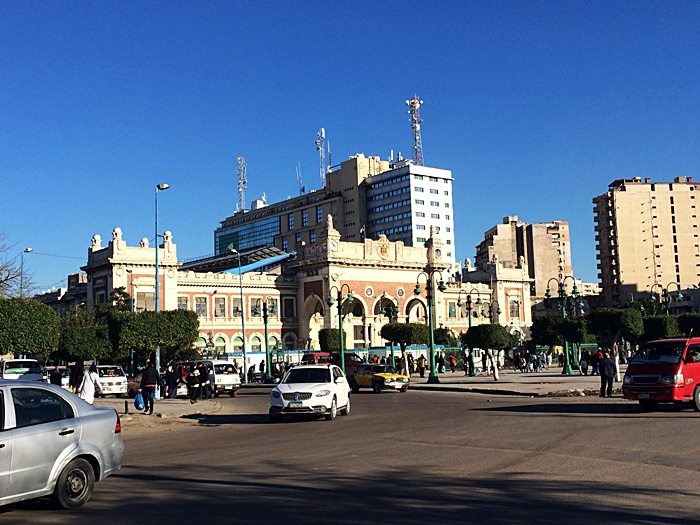
Photo: Misr Train Station located in downtown Alexandria
Odds are, even if you didn’t pay attention in history class, you’ve heard of Julius Caesar, Marc Antony, and Cleopatra (there were actually seven but the last one was the ballsiest of them all). They all lived in Alexandria making it one of the oldest inhabited and most interesting cities in the world.
B – Beaches
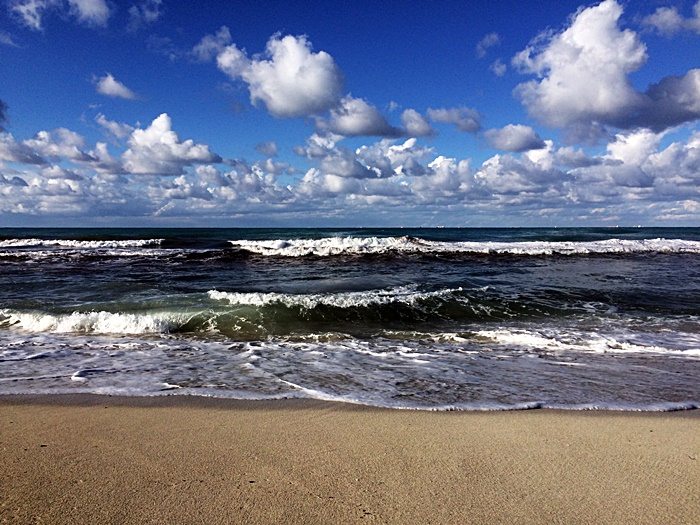
Photo: The Mediterranean Sea as seen from a private beach in El Agamy
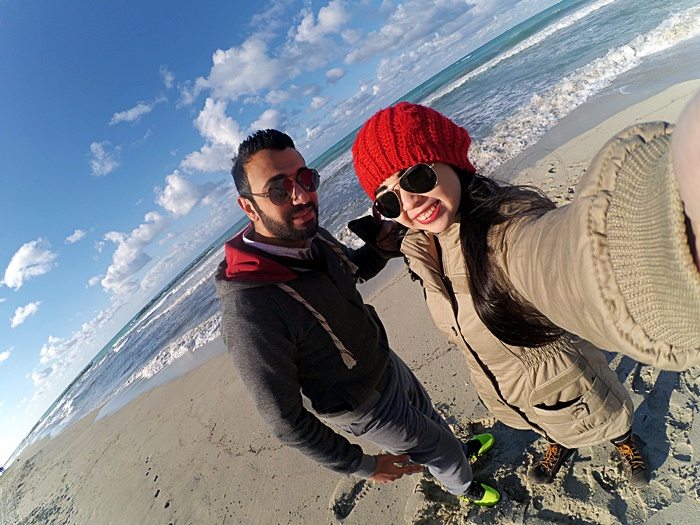
Egyptian beaches are synonymous to Sharm El Sheikh, the country’s most popular resort town, but not to be missed are the little known white sand beaches dotting the Mediterranean coast.
Head west to El Agamy, though you’ll probably be better off in sweaters than bikinis if you come in December like I did.
C – Cairo
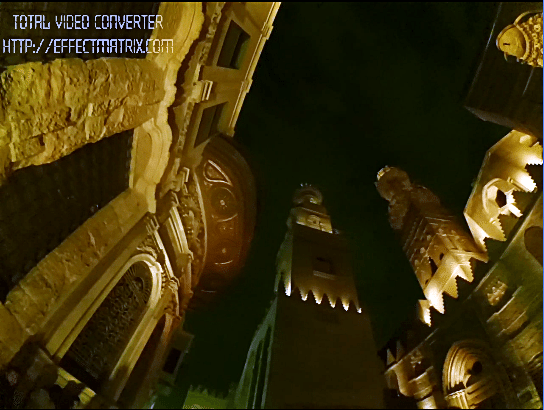
Photo: Light bathes the medieval buildings in Al Muizz
Long after the fall of the pharaohs, Cairo rose to prominence during the early years of Islamic occupation. Today, it is Egypt’s capital city, the seat of government, and the cultural melting pot of locals and foreign expats alike. Take a stroll down old Al Muizz, one of the few open-air museums of the world, and bargain for souvenirs in nearby Khan El Khalili.
D – Dunch
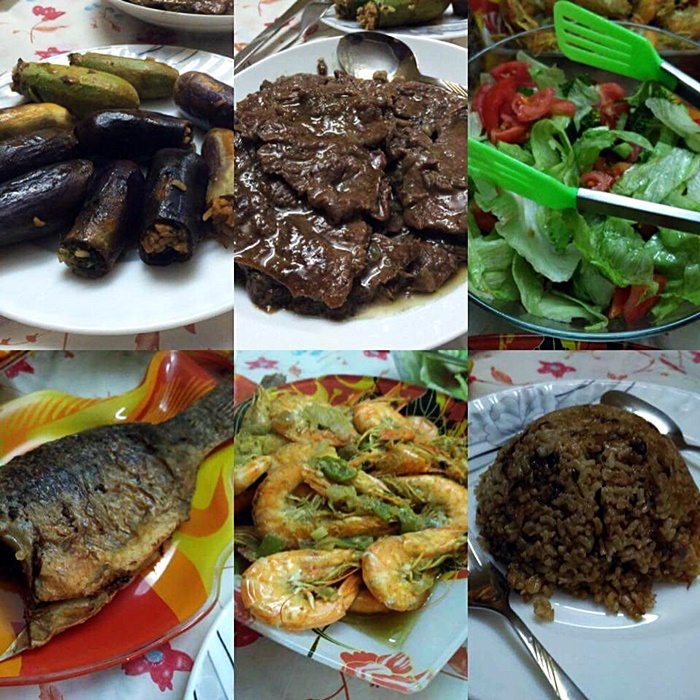
Photo: Nothing beats Mama’s lutong-bahay, a refreshing change to Dubai’s fast food takeaways
The Egyptian winter sun does not rise until as late as 8 in the morning, so brunches are at 11 and dunches (lunch + dinner) are at 5 or 6. Since we didn’t join a tour, we enjoyed the luxury of late brunches and dunches every day, courtesy of Mama’s home cooking: vegetable mahshy, beef with onions, freshly-tossed salad, fried fish, cumined shrimps, and spiced rice.
E – Evil Eye
Beware the Evil Eye! One jealous look is all it takes to bring down inexplicable misfortune on the curse’s victim. Peddlers, on the other hand, make a fortune selling amulets bearing the Hand and Eye of Fatima, the only charms said to counter the curse of the Evil Eye.
F – Fuul & Falafel
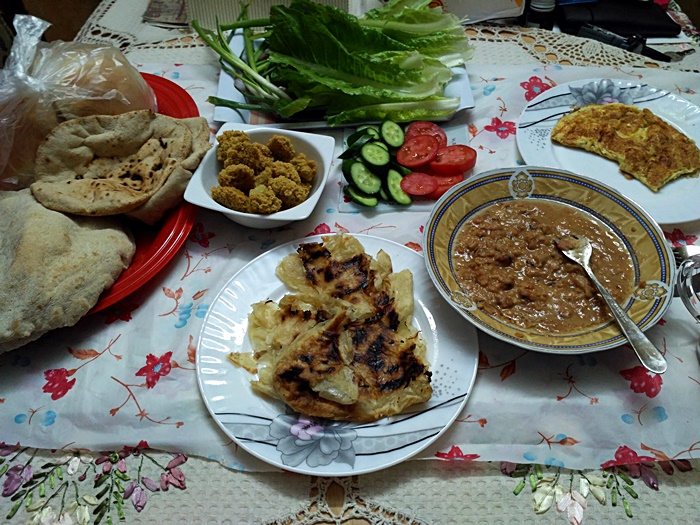
Photo: Eat like an Egyptian by complementing every meal with market fresh veggies
Ever wondered why Egyptian football teams are so good? That’s probably because of fuul and falafel, the real breakfast of champions. Best eaten with freshly baked bread, fuul are stewed fava beans, and falafel or taameya are deep-fried fava bean balls. You can tell fuul and falafel are coming from miles away by the sound of a tinkling bell in the morning, but the best fuul and falafel are made from scratch from an Egyptian mama’s kitchen. Yum!
G – Giza

Photo: A shot of with the three Giza Pyramids and the Sphinx
More than a millennium before the Burj Khalifa, the Great Pyramid of King Khufu was the tallest building in the world. You can still bask in its timeless glory in Giza, just a short drive away from the capital. And while you’re there, check out the nearby pyramids of King Khufu’s son and grandson (talk about a grand family reunion) and kiss the sphinx if you can!
H – Hieroglyphs
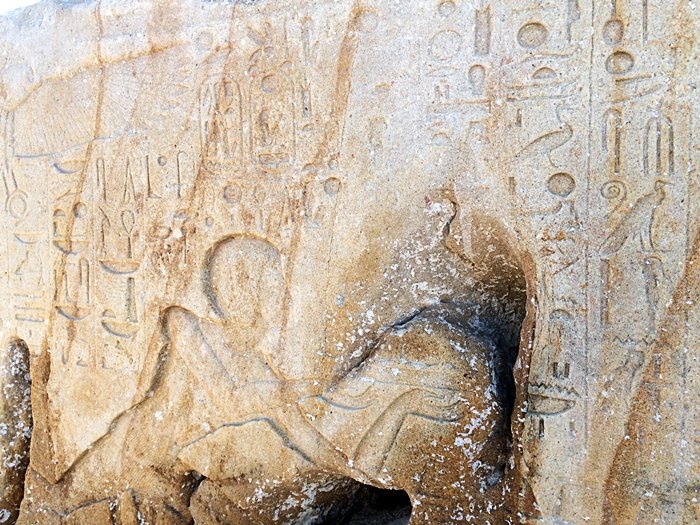
Photo: A portion of a monument retrieved underneath the waters of the Alexandrian coastline.
Why are hieroglyphs so much cooler than our boring alphabet anyway? Hieroglyphs were developed by Ancient Egyptians to record official documents. It is a writing system based on pictures, whereas the modern alphabet is based on sounds. I always thought Egyptians are born with the hieroglyphic system programmed in their heads, but all I got was a smack in the head when I forced my Egyptian Bae to translate them for me.
I – Islam

Photo: The incorruptible body of Saint Sabine
Like most Middle Eastern countries, Islam is the state religion of Egypt. There are thousands of mosques across the country, but the holiest and most historical ones are concentrated in Cairo. 90% of the population may be Muslims, but the Christian minority live in peaceful co-existence with them. Among the Christians, the dominant sect is Coptic Orthodoxy, but I did not have a hard time finding Catholic churches either. I went to Saint Catherine’s Cathedral in Alexandria to hear Mass but ended up visiting the tomb of an Italian King and seeing the body of the incorruptible Saint Sabine.
J – Jinns
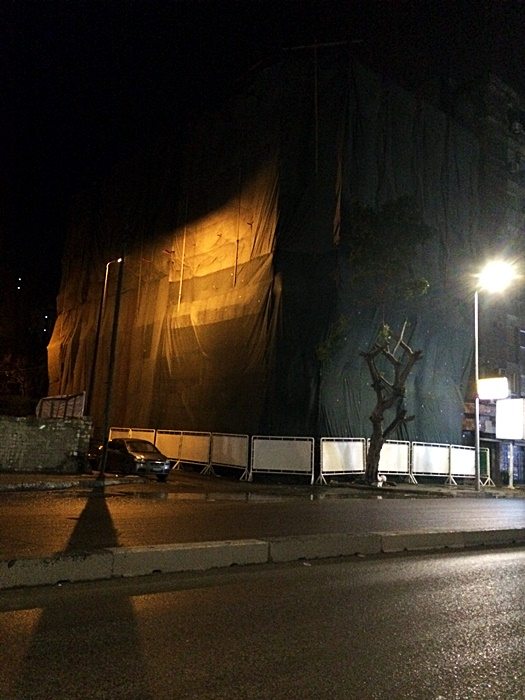
Photo: The Haunted Roushdy Building
Forget the friendly blue genie in Disney’s Aladdin. Jinns are more than your run-on-the-mill mythological beings; they are real as far as the Quran is concerned. Like humans, they can be good or evil, though the jinns inhabiting the haunted Roushdy Building are most certainly evil. Legend has it that the first occupants were a young couple who moved in on their wedding night. The next morning, they found themselves sleeping on the street outside with all their furniture. Since then, nobody could sleep a wink in Roushdy Building. On a late night cruise along Alexandria, my Bae’s best friend drove us to Roushdy where we found it to be completely covered with dark tarpaulin, as the neighbors complained of seeing “faces” behind its windows.
K – Kom El Shokafa
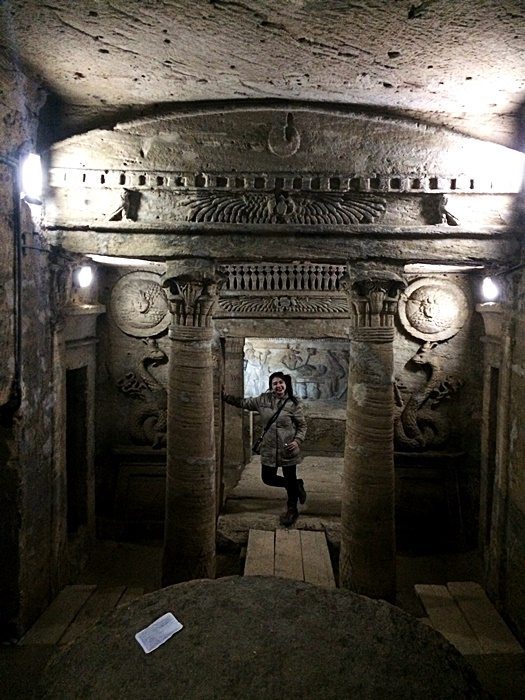
Photo: The gateway to the underground city of the dead
Do yourself a favor and explore Kom El Shokafa Catacombs. It is an underground burial chamber composed of three levels, each “new” one built (or carved, to put it more aptly) on top of the other. The topmost level features a unique intermarriage of Egyptian, Greek, and Roman mythology, pointing to Egypt’s Roman occupation. Strike up a conversation with the resident tour guide Mahmoud, a Greco-Roman history expert. He has a soft spot for travel bloggers and is willing to let you take photos (despite the no photos policy) if you promise to spread online awareness of Kom El Shokafa. It’s Mythology Disneyland, wallahy!
L – Library of Alexandria
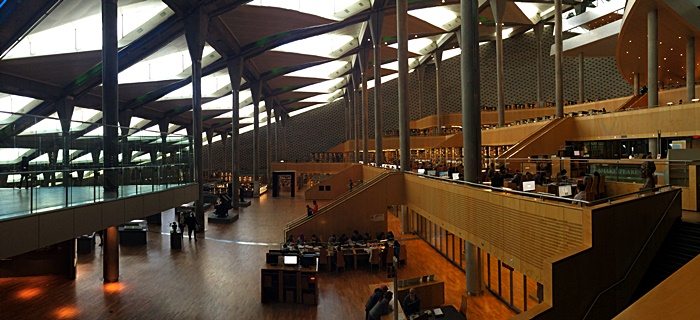
There was a time when geniuses all came together to read and chill. That’s the short story of how the Great Library of Alexandria was first built under the patronage of Cleopatra’s family. Unfortunately, the original structure had long since been destroyed, but in 2002, the Egyptian government rebuilt a new one on the very same spot. Today, geniuses in the form of university professors, students, and foreign researchers come together in the brand new library housing multilingual books donated from around the globe.
M – Museums

Photo: The façade of the Egyptian Museum in Cairo
With Egypt being one of the earliest cradles of civilization, there was no shortage of museums. I was able to visit 3: the Egyptian Museum in Cairo and the Antiquities Museum and Sadat Museum in Alexandria (on the basement of the Library). Meet over 20 mummies encased in glass (for your safety) in the Mummy Galleries and see the “cursed” death mask in the Royal Gallery of Tutankhamun in the Egyptian Museum. The Antiquities Museum is one of the rarest museums in the world, showcasing Greco-Roman artifacts discovered on the very site it was built on. The Sadat Museum is a small gallery commemorating the life and times of Egypt’s beloved late president, Anwar Sadat.
N – Nile River
Just because I wasn’t able to doesn’t mean you shouldn’t. When in Cairo, take the time to cruise along the Nile River. If it weren’t for the Nile, Egyptian civilization as we know it would have never existed.
O – Osiris
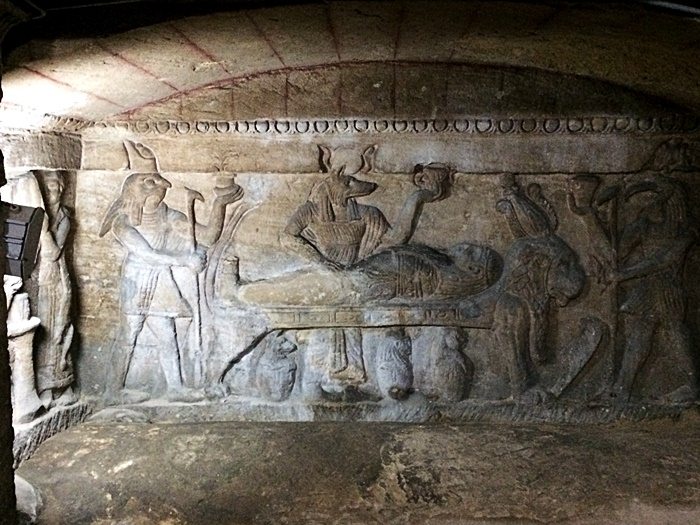
Photo: A mummification scene depicted in one of the tombs in Kom El Shokafa.
You may not know Osiris, but you most certainly know about mummies. The practice of mummification started with the worship of Osiris, the god of the afterlife. Osiris was resurrected when the goddess Isis found all of his chopped body parts. Ancient Egyptians believed that the body must be preserved (or mummified), so that the dead could attain eternal life.
P – Pharaohs
The ancient rulers of Egypt were styled as Pharaoh, a word which literally translates to “Great House.” The first Pharaoh was Menes, who united Upper and Lower Egypt. The last Pharaoh was Cleopatra VII, who committed suicide because she refused to surrender to the Romans.
Q – Qaitbay Citadel

Photo: I collect jump shots – and it has gotten me in trouble with security many times before. This is me jumping in front of the Citadel.
A Medieval fortress at the tip of Alexandria, the Citadel of Qaitbay had served to protect northern Egypt from foreign conquerors for centuries, until it retired to become the tourist attraction it is today. Just don’t come 15 minutes before closing time like we did. The security practically chased us out.
R – Roman Ampitheatre
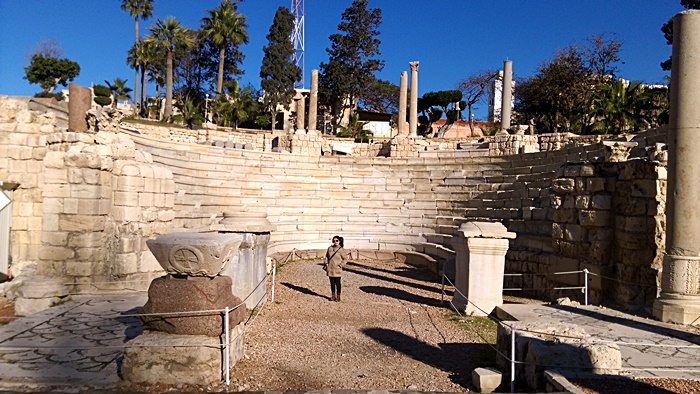
If you can’t visit Rome any time soon, visiting the Roman Ampitheatre is your next best bet. If you stand on the right spot, you can hear your voice echo across the marble ruins.
S – Sadat
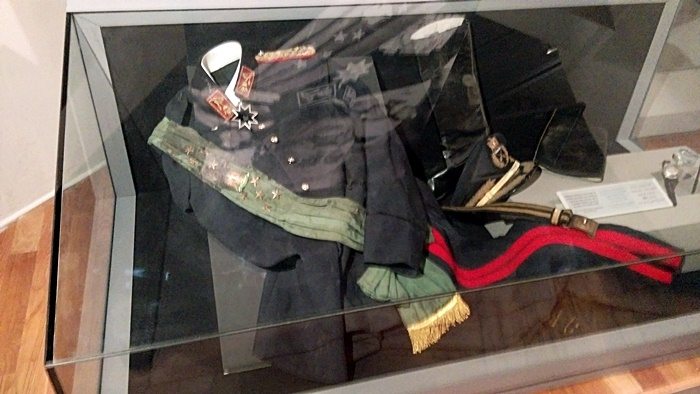
Photo: President Sadat’s bloodied uniform.
The late President Anwar Sadat was the last person you’d expect to be assassinated. He was (and still is) beloved by the Egyptian people. But assassinated he was and at the hands of his own military. The bloody uniform he wore on the day of his death is the centerpiece of his museum on the basement of the Library of Alexandria.
T – Tips
Tipping has always been a way of life for Egyptians. But with the economy taking a turn for the worse, more and more Egyptians are relying on tips to survive. It is always a good idea to carry loose change for tipping when in Egypt.
U – Underwater
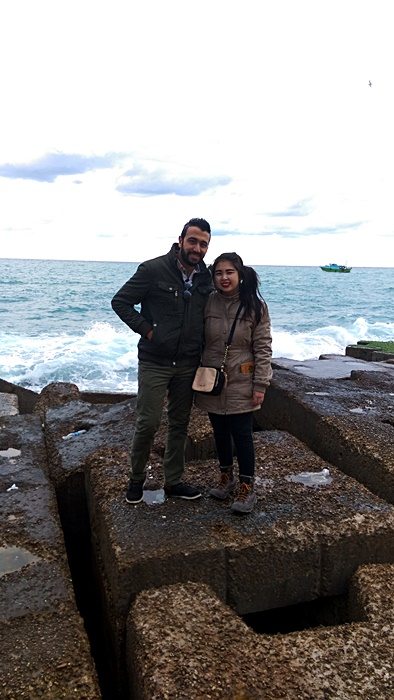
Photo: Enjoying the sea spray from the beach outside the Citadel of Qaitbay.
Ready to hit the water? Along the Alexandrian corniche are diving spots to explore underwater ruins. The Mediterranean coastline is filled with ancient artifacts that have yet to be hauled back to the surface.
V – Valley of the Kings and Queens
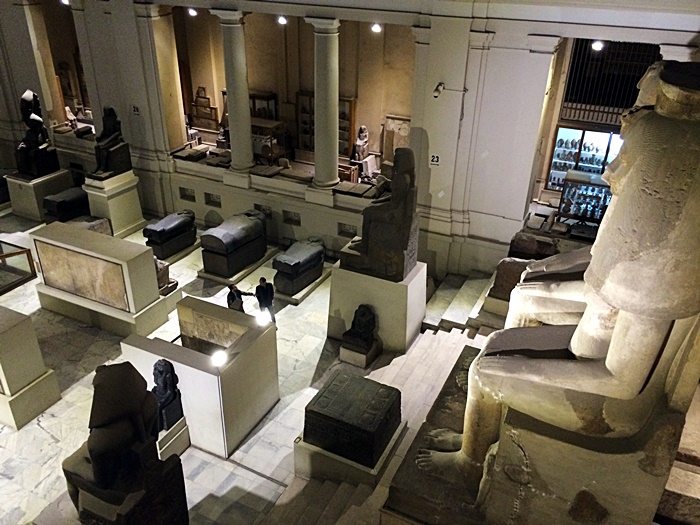
Photo: Ancient stone monuments on display in Cairo’s Egyptian Museum
The biggest regret of my first trip to Egypt? I was not able to visit Luxor. You’re better off booking with a tour group though, because you’re in for a bumpy ride. Many artifacts from Luxor are now housed in the Egyptian Museum in Cairo, but every few years or so, a new site is discovered in the Valley, proving how little we still know of Egypt.
W – Winter
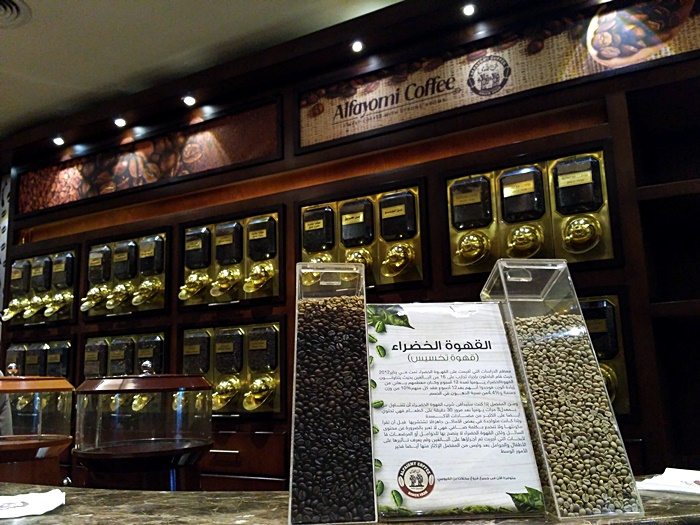
Photo: Al Fayomi’s wide collection of coffee beans can satisfy even the most scrupulous coffee connoisseur’s taste.
Egyptian winters are underratedly cold. Snows mostly fall in Sinai, but temperatures in Cairo and Alexandria can fall to as low as 4 degrees. Bundle up or duck in a cozy café for a warm cup.
X – Excavations

Photo: Busy experts performing restoration works in Cairo’s Egyptian Museum
Did you know? Excavations are tricky business. When archaeologists excavate a site, they would much rather take the samples they need and bury the site back than leave it out in the open for tourists. Tourism is a major player in Egyptian economy, but it is also destroying historical sites. It’s important to educate oneself and act responsibly.
Y – Yowm al Gom’a
Yowm al Gom’a means Friday, the Muslims’ holiest day of the week. Gom’a is the Day of Assembly, and all Muslims are called to gather at the mosque for Friday prayers. In Egypt, it’s not unusual for noon prayers to be blasted on megaphones and broadcasted on TV and radio. Shops are either closed or opened late to honor the holy day.
Z – Ezayek
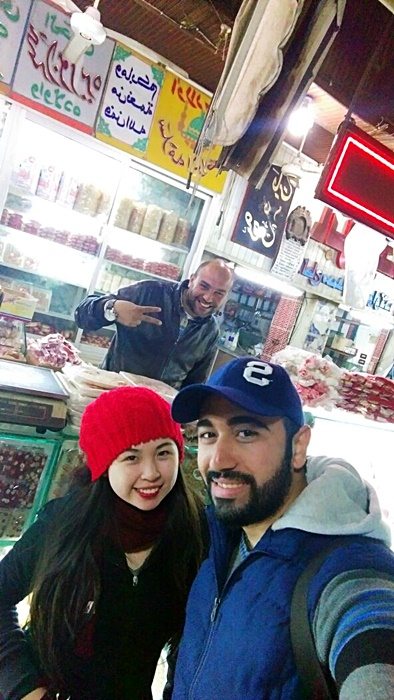
Photo: A grou-fie with a friendly local. Hussein helps his father run their family business selling sweets and pastries.
Learning a little Arabic is always a good idea in Egypt. Unlike U.A.E. where English speakers outnumber Arabic speakers, not all Egyptians can speak conversational English. “Ezayek?” means “How are you?” and it’s the best way to start a conversation.
Ready for your very own Egyptian trip? Before you start packing your bags, head on over to https://dubaiofw.com/egypt-tourist-visa-dubai/ for a step-by-step guide to applying for a 30-day tourist visa to Egypt.
About the Author: Nicholette
 Nic lives and breathes creativity, perfecting her craft as a writer and editor and blogging about her thoughts, travels, and everything in between at https://nicholettejeanne.com/blog/
Nic lives and breathes creativity, perfecting her craft as a writer and editor and blogging about her thoughts, travels, and everything in between at https://nicholettejeanne.com/blog/
Check out Nicholette’s other articles on DubaiOFW below:
- My Short Visit to Lebanon
- How To Apply For An Egypt Tourist Visa in Dubai
- How to Apply for a Philippine Visa for UAE Expats
- How to Apply for a Lebanon Visa in Dubai
- How to Get Married in UAE Courts for Expats
- An OFW’s Guide on How to Get an Online Master’s Degree from the University of the Philippines Open University (UPOU)
Share your thoughts. Contribute an article to DubaiOFW.com
Want to publish your experience? Share your everyday stories, food trips, travel, photo stories, or tips in Dubai to our growing community. More information here – Become a Dubai OFW Contributor